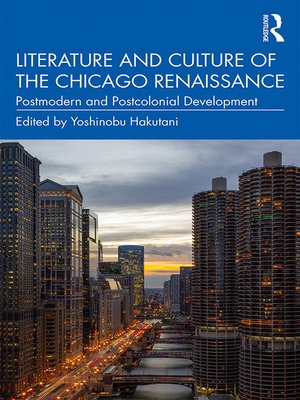Literature and Culture of the Chicago Renaissance
ebook ∣ Postmodern and Postcolonial Development
By Yoshinobu Hakutani

Sign up to save your library
With an OverDrive account, you can save your favorite libraries for at-a-glance information about availability. Find out more about OverDrive accounts.
Find this title in Libby, the library reading app by OverDrive.



Search for a digital library with this title
Title found at these libraries:
| Library Name | Distance |
|---|---|
| Loading... |
The Chicago Renaissance has long been considered a less important literary movement than the Harlem Renaissance. While the Harlem Renaissance began and flourished during the 1920s, but faded during the 1930s, the Chicago Renaissance originated between 1890 and 1910, gathered momentum in the 1930s, and paved the way for the postmodern and postcolonial developments in American Literature. To portray Chicago as a modern, spacious, cosmopolitan city, the writers of the Chicago Renaissance developed a new style of writing based on a distinct cultural aesthetic that reflected ethnically diverse sentiments and aspirations. Whereas the Harlem Renaissance was dominated by African American writers, the Chicago Renaissance originated from the interactions between African and European American writers. Much like modern jazz, writings in the movement became a hybrid, cross-cultural product of black and white Americans. The second period of the movement developed at two stages. In the first stage, the older generation of African American writers continued to deal with racial issues. In the second stage, African American writers sought solutions to racism by comparing American culture with other cultures. The younger generation of African American writers, such as Ishmael Reed, Charles Johnson, and Colson Whitehead, followed their predecessors and explored Confucianism, Buddhist Ontology, and Zen.
This volume features essays by both veteran African Americanists and upcoming young critics. It is highlighted by essays from scholars located around the globe, such as Toru Kiuchi of Japan, Yupei Zhou of China, Mamoun Alzoubi of Jordan, and Babacar M'Baye of Senegal. It will be invaluable reading for students of Americanists at all levels.







